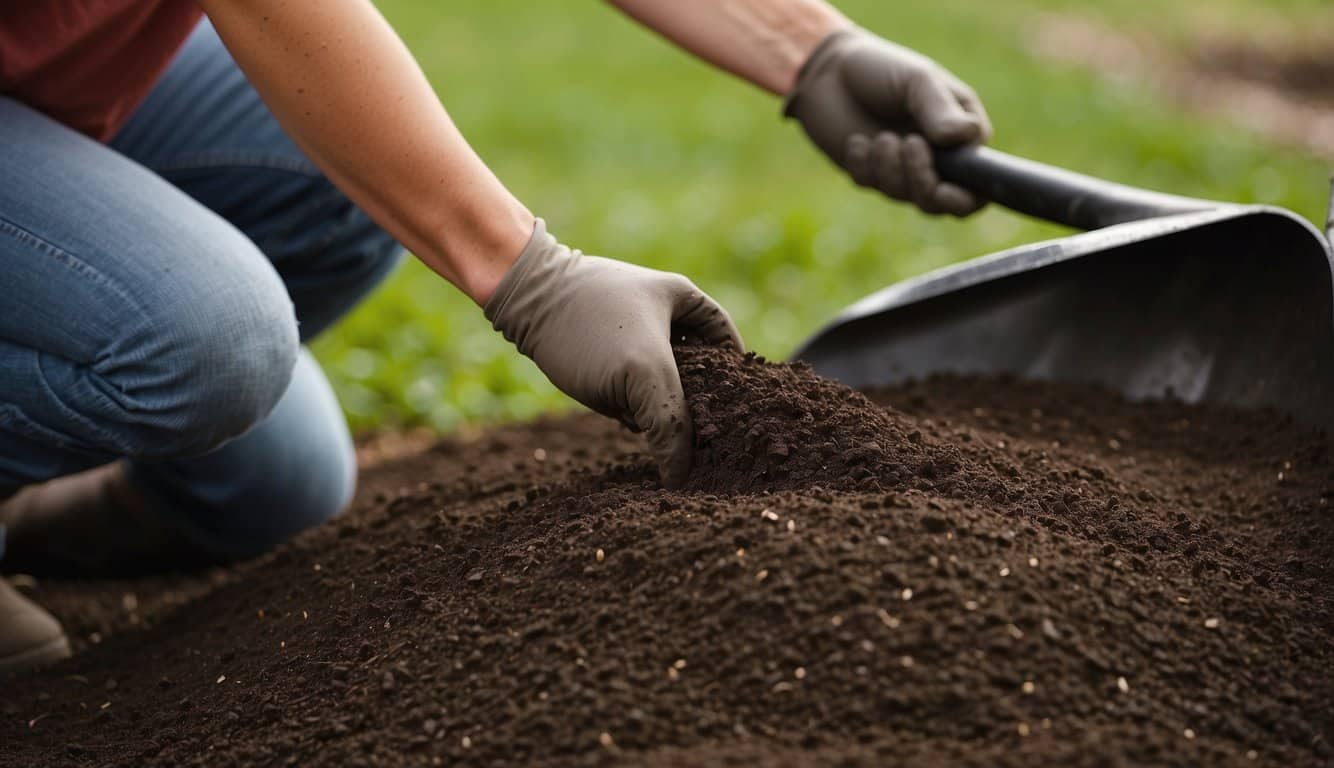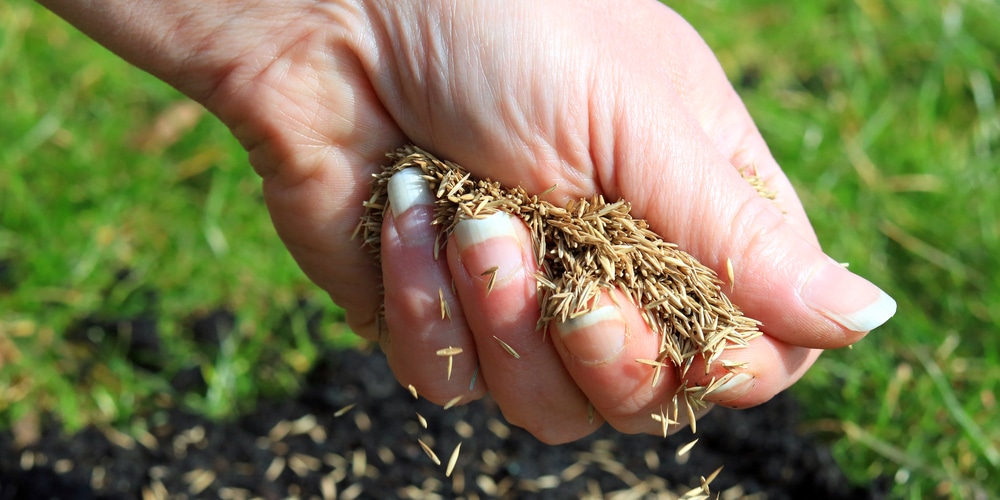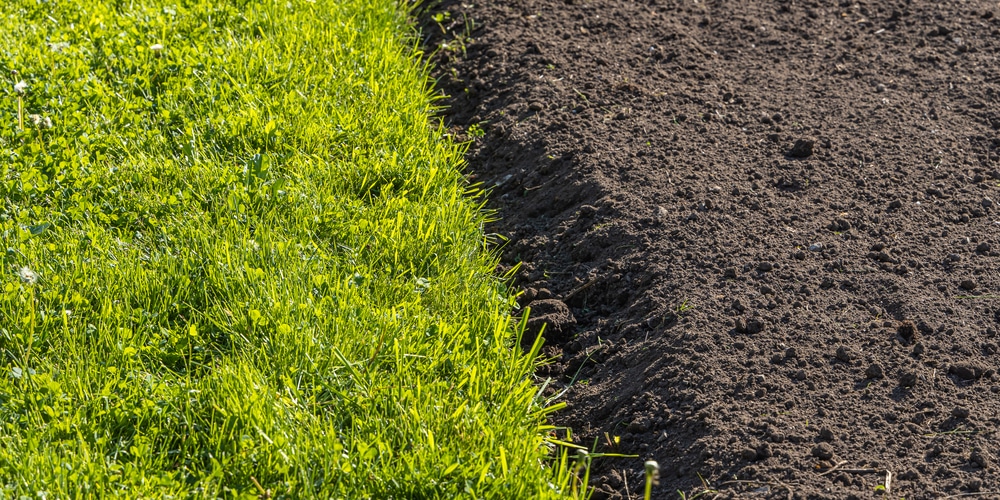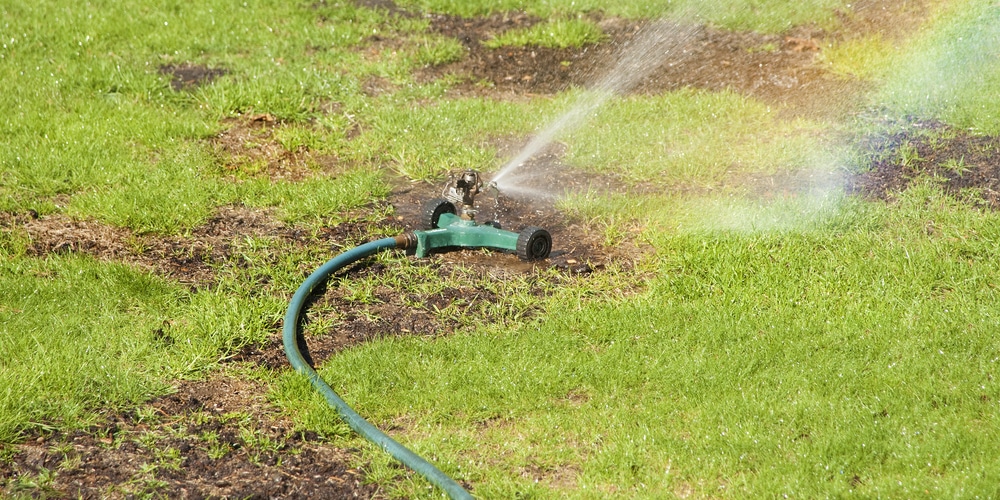Soil Amendments for Super Great Grass Growth
When you’re eager to enhance your grass seed’s germination and overall health, soil amendments can be game-changers. These are materials mixed with your soil to improve its structure and fertility.
Here’s what you need to know:
Types of Amendments:
- Organic Matter: Including compost, peat, and manure, which enrich the soil with nutrients.
- Inorganic Additives: Such as vermiculite, which aids in water retention and root growth.
Table 1: Common Soil Amendments and Their Uses
| Amendment | Benefit | Ideal For |
|---|---|---|
| Vermiculite | Water retention | Sandy soils |
| Lime | pH adjustment | Acidic soils |
| Sulfur | pH reduction | Alkaline soils |
| Compost | Nutrient boost | Nutrient-poor soils |
Application Tips:
- Assess Your Soil: Testing your soil’s pH and nutrient levels helps you pick suitable amendments.
- Mix Thoroughly: Uniformly blend amendments into the soil to avoid uneven growth.
- Planting Depth: Seeds need to be sowed at correct depths; amendments should not interfere with this.
- Water Wisely: After application, water lightly to help the amendments settle, avoiding heavy watering right away to let the amendments bond with the soil.
Selecting the Right Soil Amendments
When you’re looking to enhance your grass seed’s growth, choosing appropriate soil amendments is crucial. The right amendments will improve soil structure, nutrient content, and pH balance for optimal seed development.
Organic Matter
- Compost: This nutrient-rich material improves soil structure and provides a hospitable environment for beneficial microbes. Incorporating compost into your soil ensures a healthy foundation for your grass seed.
- Shredded Leaves: A mix of fresh grass clippings and shredded leaves can increase the organic content of your soil, which in turn promotes better root growth and moisture retention.
pH Modifiers
- Lime: If your soil is acidic, lime can raise the pH to a more neutral level, making nutrients more available to your grass.
- Sulfur: Conversely, if your soil is too alkaline, sulfur may be used to lower the pH, which can help to prevent nutrient lock-up and promote healthier grass growth.
Fertilizers and Nutrients
- Nitrogen: Essential for leaf growth, nitrogen is a key nutrient for lush, green grass.
- Phosphorous: For root development, phosphorous is vital, especially for young grass seeds that are establishing themselves.
- Potassium: Improving overall plant health, potassium helps grass withstand stress like drought and disease.
Application Techniques
To successfully boost your grass seed’s growth, precision in applying soil amendments is crucial. From evaluating your soil’s quality to integrating amendments thoroughly, the proper application techniques ensure optimal conditions for a lush lawn.
Testing Soil Quality
- Check pH Levels: Your grass thrives in slightly acidic to neutral soil—usually between 6.0 and 7.0. Use a soil test kit to measure the pH before adding amendments.
- Examine Soil Texture: Determine whether you have sandy, loamy, or clay soil as this will influence the type of amendment needed.
Timing and Frequency
- Seasonal Considerations: Apply amendments during growing seasons, preferably in spring or fall for cool-season grasses.
- Regular Monitoring: Assess your soil annually to determine if further amendment is necessary.
Incorporating Amendments into Soil
- Even Distribution: Evenly spread amendments over the area using a broadcast spreader or by hand for smaller patches.
- Proper Integration:
- Use a rotary tiller or garden fork for mixing amendments into the soil.
- Aim for a depth of 4-6 inches to allow roots to benefit fully.
Monitoring and Adjusting Soil Health
To ensure your grass thrives, it’s essential to monitor your lawn’s soil health regularly and adjust as necessary. Vital steps include observing grass growth, re-testing the soil, and implementing adjustment strategies.
Observing Grass Growth
Look for Signs:
- Uniformity: Are there patchy areas?
- Color: Is the grass a vibrant green, or are there yellowing spots?
- Density: Is the growth thick and robust or thin, indicating poor soil health?
Soil Re-Testing
When and How to Test:
- Conduct tests seasonally or when growth issues arise.
- Use a soil test kit to measure pH, nutrient levels, and moisture content.
Adjust soil pH if necessary:
- Add lime to increase pH if your soil is too acidic.
- Incorporate sulfur to lower pH for overly alkaline soils.
Adjustment Strategies
Nutrient Amendments:
- Nitrogen: For growth and lush green color.
- Phosphorus: Critical for root development.
- Potassium: For overall health and disease resistance.
Organic Matter:
- Add compost to enrich the soil.
- Aerate to relieve compaction, allowing roots to expand.
Water Management:
- Ensure consistent moisture levels, avoiding overwatering.
- Water deeply but less frequently to encourage deep root growth.
Troubleshooting Common Issues
When your grass seed is struggling to grow, it’s essential to assess several factors that could be impeding its development. Here is a strategic approach to identify and resolve common issues:
- Compacted Soil: Your seed needs room to breathe. If the soil is too dense, it may inhibit root growth.
- Solution: Aerate your soil to increase oxygen flow.
- Tools like a garden fork or a rented aerator can effectively break up the soil, improving its structure and drainage.
- Inadequate Watering: Grass seeds require a consistent amount of moisture to germinate.
- Solution: Ensure your lawn is watered properly. The soil should be moist up to 1-2 inches deep.
- Adjust your watering schedule if the seeds are drying out.
- Nutrient Imbalance: Your soil’s pH levels and nutrient ratios greatly affect seed growth.
- Solution: Test your soil’s pH and adjust it to fall within the ideal range of 6.0 to 7.5.
- If the carbon to nitrogen ratio is off, consider soil amendments like compost to restore balance.
- Poor Soil Temperature: Germination depends on the soil being warm enough.
- Solution: Plant seeds during the correct season, ensuring the soil temperature is conducive to growth.
- Blankets or coverings can keep the soil warm if sowed early or late in the season.
- Excessive Thatch: A layer of thatch can prevent seeds from making contact with the soil.
- Solution: Remove thatch by raking or using a dethatcher to expose the soil, allowing seeds to anchor and access nutrients.
Frequently Asked Questions
In this section, you’ll find targeted answers to common queries regarding soil amendments for optimizing grass seed growth. Whether you’re adjusting soil pH with lime or enriching your soil with fertilizers, these points clarify how and why each step is crucial for a healthier lawn.
How can lime treatment alter soil pH for better grass growth?
Lime treatment can raise the pH level of acidic soils, making it more alkaline. For grass to access nutrients effectively, a balanced pH is critical, and lime helps achieve this by neutralizing excess acidity, fostering an ideal environment for grass growth.
What are the optimal conditions for applying soil amendments like lime to zoysia grass?
- Apply lime to zoysia grass when the soil test indicates high acidity.
- The best time for application is during fall or spring when the grass is actively growing, and the soil is moist but not saturated.
In what ways does Love Your Soil function as a soil enhancer for grass seed?
Love Your Soil assists in loosening hard soils, promoting air and water penetration. It also supplies essential nutrients, helping grass seeds establish more readily and develop into robust, healthy lawns.
What methods increase grass seed germination and growth speed?
- Provide proper water irrigation without causing over-saturation.
- Ensure good seed-to-soil contact by lightly raking seeds into the topsoil.
- Use starter fertilizers to supply initial nutrients critical for speedy germination.
How can one determine when a lawn is in need of soil amendments such as lime?
You can identify the need for lime by:
- Conducting a soil pH test; a pH below 6 could signify the requirement for lime.
- Observing the lawn for signs of poor growth and yellowing despite adequate lawn care.
What steps should be taken to thoroughly enrich soil before planting grass seed?
To enrich your soil effectively:
- Start by testing the soil to understand its needs.
- Remove weeds and debris, and loosen the soil for better root penetration.
- Mix in organic material like compost to improve soil structure and nutrient availability.
- Finally, apply a layer of topsoil mixed with grass seed to promote optimal germination conditions.
Last update on 2025-04-19 / Affiliate links / Images from Amazon Product Advertising API






